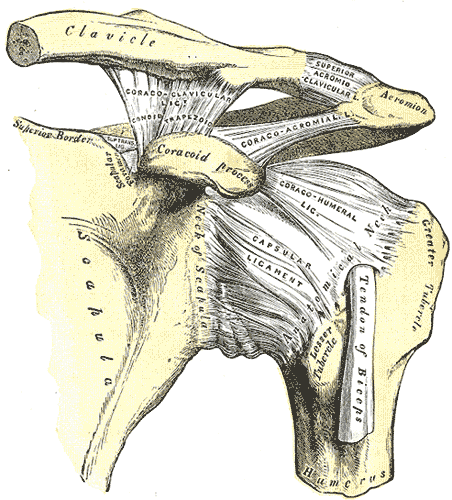
Image: BodyParts3D/Anatomography web site: http://lifesciencedb.jp/bp3d/?lng=en. Located at: http://lifesciencedb.jp/bp3d/?lng=en. License: CC BY-SA: Attribution-ShareAlike
Enjoy today’s new body learning 110%…because tomorrow, what you learned today will probably change. It still happens to me, and honestly I’m happy when it does because it’s called neuro-plasticity and it’s actually good for you! Come to your first Mobilignment™ morning class for free (just email me to get the link) and I’ll prove it to you.
I attract anatomy geeks in my practice because I love them. We understand each other and can spend happy hours geeking out on anatomy. Many of my students are body workers or experts in their own right, but even so there is a deeper thirst for the unknown, the new unexplored territory. Our body never disappoints. It’s like New York City – you try to visit all the different neighborhoods, but it’s so big, by the time you get back to a place you explored a couple of years ago, it’s all different!
 In this spirit, I’d love to share a recent discovery that I’ve had around the structure of my shoulder girdle that I hope will debunk the idea that rounded shoulders are bad. People. Look at the shape of your ribcage. It’s round. Look at the shape of your shoulder blade, which wraps around your ribs. It’s round. Even the bones are round! You couldn’t make them flat if you wanted to. Furthermore, your collarbone does not cover the width of the front or your chest, it instead ends a bit early, because your shoulder blade wraps forwards around your ribs to create your shoulder joint and the collarbone meets about 1/2 of an inch or so in from the widest part of your back.
In this spirit, I’d love to share a recent discovery that I’ve had around the structure of my shoulder girdle that I hope will debunk the idea that rounded shoulders are bad. People. Look at the shape of your ribcage. It’s round. Look at the shape of your shoulder blade, which wraps around your ribs. It’s round. Even the bones are round! You couldn’t make them flat if you wanted to. Furthermore, your collarbone does not cover the width of the front or your chest, it instead ends a bit early, because your shoulder blade wraps forwards around your ribs to create your shoulder joint and the collarbone meets about 1/2 of an inch or so in from the widest part of your back.
It feels really good to find the little space between your collar bone and your shoulder blade with a hand, and to really let that shoulder blade slide forward so you are not wasting effort pulling your collarbone back and compressing that amazing, beautiful joint.
I knew this information intellectually, but when I started to investigate I found that I was indeed pressing my collarbones back, causing unnecessary tension in my shoulders, mostly my trapezius, which wraps around the body like a cape…perhaps more about that next week.
You can try it like this. With your right hand, locate this space between collarbone and shoulder blade. With your left hand, now hug your right arm. You’ll notice that if you fully engage your left hand with your right arm, your trapezius will let go, your shoulder blade will slide forward, and it feels really good! Enjoy playing around with this in movement too – just knowing that the collarbone is not the shoulder blade, they are two different neighborhoods.

Just tried your exercise of locating the acromioclavicular joint and finding a way to release the scapula. It’s interesting — I’m not sure what the concept of relaxation really means any more – it seems like I’m always making a choice about what to activate. But I appreciate the feeling I get of not actively engaging the rhomboids and middle trapezius to draw the scapula medially.
Hi Ron! Yes – Mobile Alignment points are not intended to be “relaxed” – the only direction is to inquire “are they mobile, or are they stuck?” If they are stuck, you have become rigid. If they are mobile, you are ready for whatever engagement or action is needed. The whole structure of the shoulder girdle is so amazing, intricate, and designed to be alive and participating in balance and action. Scapula may need to draw medially – just not to get stuck there. Great to see you here, sorry it took me so long to respond! I was gummed up with spam!
When students complain about their forwarded rounded shoulders and want to fix the situation by pulling their shoulders back and narrowing their back, I try to help them understand that their postural concerns and the forwardness can only be changed by working on the lengthening spine and the overall arrangement of their torso and how it connects to head and pelvis.
I completely agree about the roundness of the shoulder per se. It’s the narrowing in the front and rounding in the back that makes them come forward. Thanks as always, Clare for your posts. I am also an anatomy geek.
Hi Michaela yes exactly! As the engagement of our uprightness shifts and changes, our shoulder girdle is designed to slide around the ribs and adjust as needed for balance, as well as engaging musclarly down into the torso for various pulling, reaching, and pushing motions. As long as the shoulder girdle is mobile, the spine will be able to release into length. Its a wonderful relationship when our students can get it unstuck 🙂